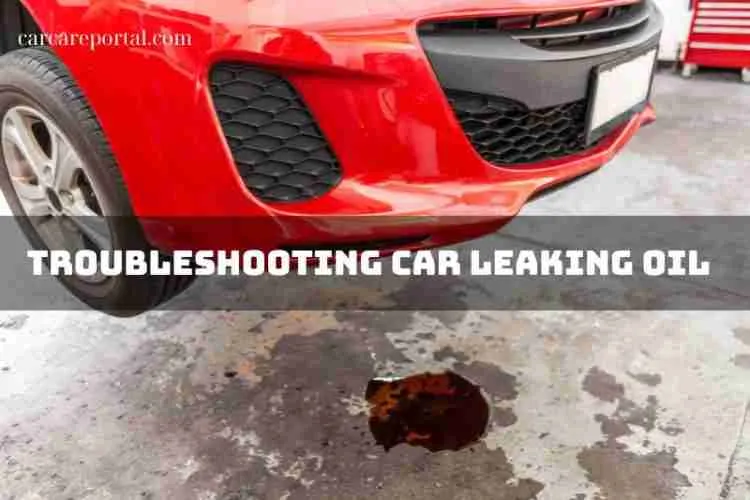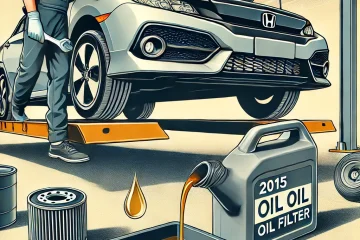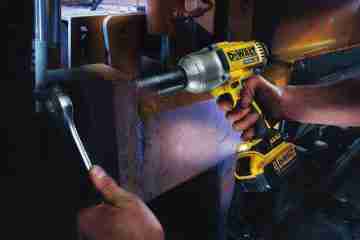Troubleshooting Car Leaking Oil: A Comprehensive Guide

Even a minor car leaking oil should be noticed. While a few drops of oil might seem insignificant, they can indicate a more serious underlying issue that could escalate over time. Ignoring a small oil leak can lead to more extensive and costly repairs in the future.
Additionally, if the leak intensifies while the vehicle is in use, it could result in engine seizure, posing a significant risk to the passengers in your car and other road users.
Regular oil change services are essential for routine maintenance and provide an opportunity to identify and address oil leaks early, preventing them from becoming major problems.
Top 8 Causes of an Engine Oil Leak
Your car’s engine comprises several critical components that can cause a severe or small oil leak.
Here’s a comprehensive list of the most common causes:
1. Broken Gaskets
Gaskets serve as mechanical seals between various engine surfaces to prevent oil leaks.
Common gaskets include the valve cover gasket, cylinder head gasket, timing cover gasket, and oil pan gasket.
Over time, these gaskets can wear out due to factors like friction, pressure, load, and high temperatures, leading to potential engine oil leaks.
2. Cracked or Dried-Out Seals
Your vehicle’s engine also includes several oil seals, such as the crankshaft and camshaft seals, which prevent engine oil from leaking.
These seals can become dry, crack, or suffer damage over time, resulting in motor oil leaks.
Diagnosing leaks from the crankshaft or camshaft seals can be challenging. Thus, it’s advisable to seek assistance from a professional mechanic for accurate diagnosis and repair.
3. Bad Oil Filter
An engine oil leak can result from a damaged or improperly installed oil filter.
Check for a loose or displaced oil filter, especially if the leak appeared after a recent oil change.
Oil filters can become clogged with debris, leading to leaks.
Pro tip: Replace your oil filter approximately every six months or after traveling 5,000 to 10,000 kilometers.
4. Loose or Over-tightened Oil Drain Plug:
A loose oil drain plug can lead to oil leaks, particularly if it isn’tneeded to be properly tightened during maintenance.
Conversely, over-tightening the oil drain plug can damage its threads, which may also cause leaks.
5. Damaged Oil Pan
The oil pan, located underneath the vehicle, is susceptible to damage from road debris, accidents, or impact with objects like speed bumps.
A damaged, cracked, or punctured oil pan can result in a noticeable oil leak, often seen as large puddles under the vehicle.
6. Excess Oil in Your Engine
Overfilling the engine with oil or spillage during an oil change can lead to leaks.
In such cases, you might see oil puddles under the car, but the engine oil light on your dashboard may not be illuminated.
7. Irregular Oil Changes
Engine oil contains additives like detergents, anti-rust agents, and friction reducers. Refrain from regular oil changes to avoid a buildup of dust and debris in the oil.
Over time, this buildup can cause the oil to thicken, increasing pressure on the oil gasket seal. This added pressure may weaken the seal, potentially leading to oil leaks.
Additionally, as the concentration of these protective additives declines over time, engine parts become more prone to corrosion, increasing the risk of oil leaks.
8. Driving in Extreme Conditions
Operating a vehicle in harsh environments, such as areas with high salt content or freezing temperatures, can contribute to engine oil leaks.
In salty conditions, corrosion of metal components is accelerated, making engine oil leaks more likely.
In cold climates, prolonged driving or aggressive acceleration can put extra strain on gaskets, seals, and other engine components. This strain reduces their durability and can result in oil leakage.
5 Common Signs of an Engine Oil Leak
Oil Puddle in Your Driveway: If you notice dark brown or yellow puddles where your car is parked, this indicates an engine oil leak.
Engine Smoking: Oil leaking onto the exhaust manifold can cause smoke to emanate from the engine area. This often happens when the engine block overheats due to low levels of transmission fluid, brake fluid, or engine oil.
The smell of Burning Oil: A distinct smell of burning oil emanating from your car often points to an oil leak. This odor occurs when leaking oil drips onto hot engine parts, sometimes accompanied by a sizzling sound. Causes of this include issues like a faulty valve cover, a broken oil filter, or a damaged engine oil pan.
Lit Low Engine Oil Light: If the low engine oil light on your vehicle’s dashboard is illuminated, it’s a sign of low oil pressure. This can occur due to low oil levels or the presence of dirty oil in the engine.
Engine Overheating: An engine oil leak can lead to a rapid decrease in oil levels. Without sufficient oil, friction increases between the pistons and other engine components, leading to overheating of the engine.
How Serious is an Engine Oil Leak? 3 Critical Reasons?
Fire and Safety Hazard:
Although engine oil is not highly flammable, it can still pose a fire risk under certain conditions.
The average engine operates at temperatures between 190-220 ℉, while engine oil typically ignites at around 300-400 ℉.
A low engine oil level can cause the engine temperature to spike unexpectedly, increasing the likelihood of the oil reaching its ignition point and potentially causing a fire.
Engine Damage:
A minor leak can gradually decrease engine oil levels, potentially falling below the safe minimum.
This can cause premature deterioration of rubber hoses or seals due to the increased heat from a lack of lubrication or debris accumulation.
Such a situation can damage crucial components like the radiator and the HVAC system or even lead to irreversible damage to the engine itself.
Environmental Pollution:
Used engine oil can contain harmful substances such as lead, zinc, and arsenic, which are byproducts of engine wear.
If this contaminated oil leaks and infiltrates water or sewage systems, it poses a significant risk of polluting waterways and the environment.
Can I Drive With an Engine Oil Leak?
Whether or not you can drive with an engine oil leak depends on the severity of the leak and the current oil level in your engine.
For Minor Leaks: If the leak is small and your oil levels are still within a safe range, you can continue to drive temporarily.
However, it’s crucial to address the leak as soon as possible. Carrying extra oil for top-ups is advisable, especially in emergency situations where you must drive.
For Major Leaks or Low Oil Levels: If the leak is severe or your oil levels are below the minimum mark, it’s not safe to drive.
Operating the vehicle in such a condition risks significant engine damage or even permanent failure.
How to Fix an Engine Car Leaking Oil?
Basic Checks:
- Ensure the oil drain plug is properly installed. A loose or improperly fitted plug can often be the source of the leak.
- Inspect the undercarriage of your vehicle to locate the origin of the leak.
Using Additives:
For small leaks, products like oil-stop leak additives can be used. These additives can help condition and soften worn rubber hoses, seals, or oil caps.
Consulting a Professional:
If the leak is significant or the cause remains unclear, it’s best to seek help from a professional mechanic. They have the expertise to diagnose and repair the issue effectively.
Understanding Repair Costs:
Before you reach out to a mechanic, it’s helpful to have an idea of the potential repair costs. Costs can vary based on the leak’s location, the parts needed, and the labor involved. Remember that addressing the issue promptly can often prevent more expensive repairs down the line.
How Much Does it Cost to Fix an Engine Oil Leak?
The cost of repairing an engine oil leak can vary widely, ranging from about $100 to $2,000 or more. This variation depends on factors like the leak’s severity, vehicle type, and labor costs in your area. Here’s a breakdown of the average estimated costs for parts, not including labor:
Oil Cap Replacement: This is relatively inexpensive, typically ranging from $8 to $20.
Oil Drain Plug Gasket: The cost for this part can be between $30 and $50.
New Engine Oil Filter: A replacement oil filter can cost from $30 to $75.
Repairing Gasket Damage: This repair can range from $80 to $200. Gasket damage can vary, so this cost might fluctuate based on the extent of the damage and the specific gasket needing repair.
Repairing an Oil Pan: This is one of the more costly repairs, with prices ranging from $100 to $550. The cost can increase depending on the complexity of the repair and the vehicle model.
What If the Leak Isn’t Engine Oil? 4 Other Types of Fluid Leaks?
Brake Fluid Leak:
A brake fluid leak is a serious safety concern as it can reduce braking power or even lead to complete brake failure.
This type of leak is usually identifiable by a decrease in brake performance.
Common causes include a faulty brake line or worn-out brake pads.
Coolant or Antifreeze Leak:
Coolant leaks can lead to the car taking longer to warm up and can cause overheating.
Signs include steam from under the hood and a sweet, syrup-like smell.
It’s often noticeable by a puddle of bright green, orange, pink, or blue fluid.
Power Steering Fluid Leak:
Similar in severity to a brake fluid leak, a power steering fluid leak can significantly affect steering control.
You might hear a hissing sound from under the hood, and the steering may feel heavier or more difficult.
This fluid is typically reddish or light brown and can leak from the steering gear or pump.
Transmission Fluid Leak:
A burnt oil smell can identify a transmission fluid leak during or after driving.
The fluid is usually red or brown and can leak due to issues with oil seals, hoses, or a damaged head gasket.
This leak can affect the vehicle’s shifting performance and should be addressed immediately.













No Comment